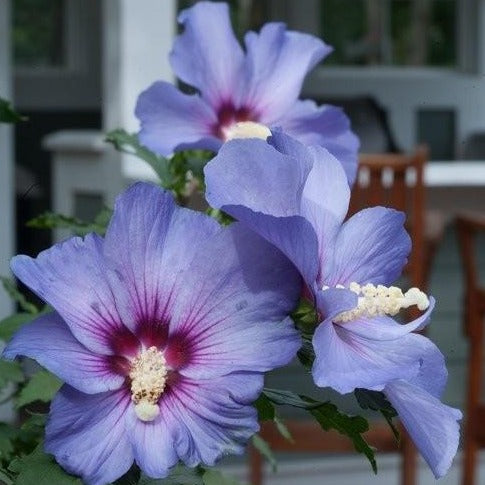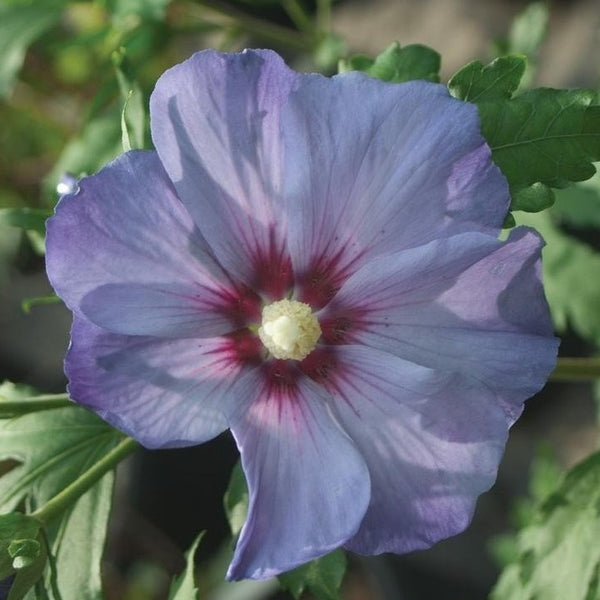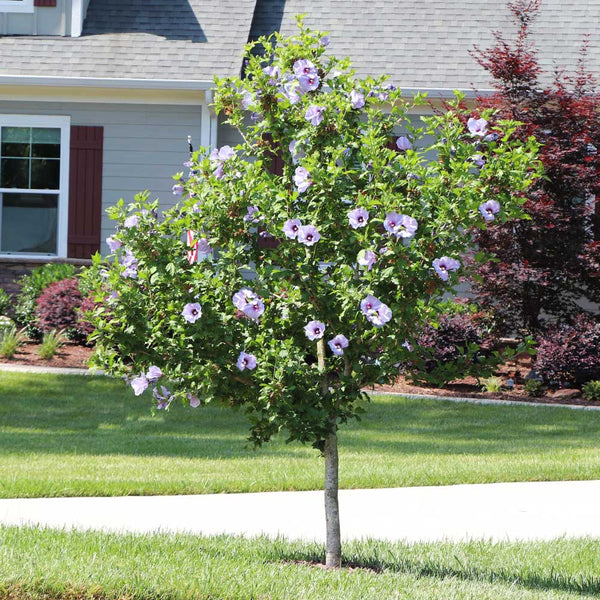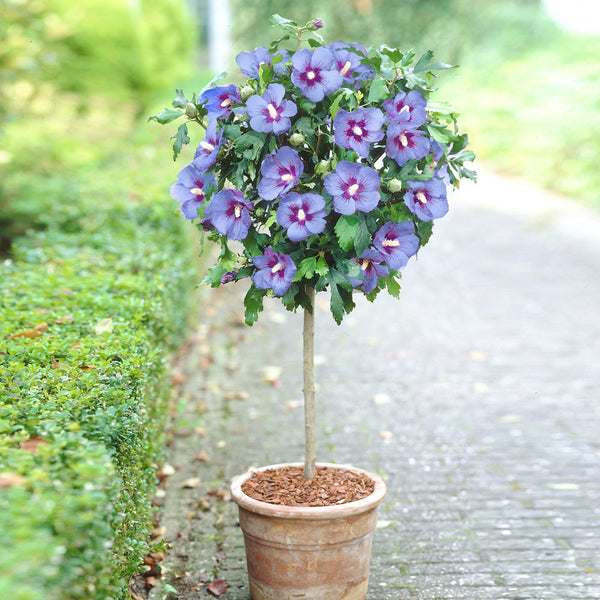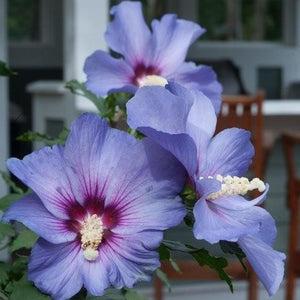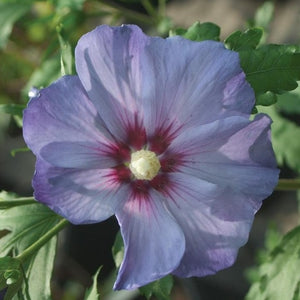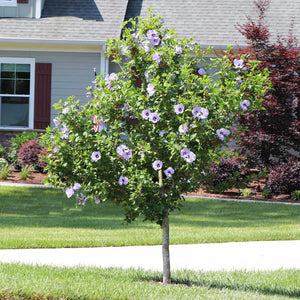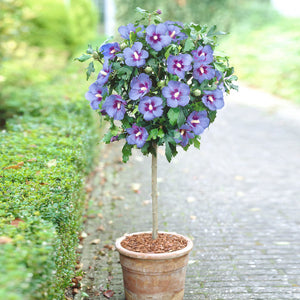Azurri Blue Satin® Rose of Sharon
Product Details
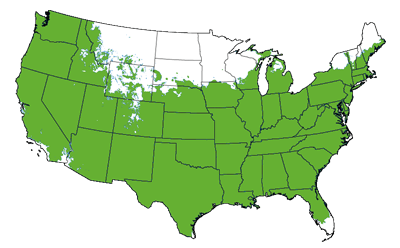 Growing Zones 5-9
Growing Zones 5-9
| Soil Type | Adaptable |
| Sunlight | Full |
| Drought Tolerance | Good |
| Mature Height | 6-10 Feet |
| Mature Width | 5-6 Feet |
| Growth Rate | fast |
| Fall Color | Green |
| Bloom Color | Blue |
| Brand | Proven Winners® |
| Shipping Restriction | AZ, OR |
Looking for a super cool, easy to grow tree that has a blue flower? Look no further! The absolutely spectacular Azurri Blue Satin® Hibiscus is just want you need!
The huge and prolific blooms of the Azurri Blue Satin® Rose of Sharon are a vivid periwinkle blue with a rich magenta purple eye. This tree can reach over 10 feet tall and 5 feet wide so give it some space to thrive. If you are looking at Blue Rose of Sharons the Azurri is your only choice! The Azurri Blue Satin® is the only seedless blue hibiscus. This variety produces few to no seeds so you won't have to worry about this stunning Rose of Sharon being an invasive nuisance.
The Azurri Blue Satin® Hibiscus is the perfect tree to add a bold pop of blue color to your landscape. This seedless Rose of Sharon is one of our favorite plants for near stone walls or in clusters around the home. Plant in masses for a nice privacy hedge that flowers! Even a single specimen plant grabs your attention with vibrant color and attractive, deep green foliage! Use the Azurri Blue Satin as a fabulous centerpiece to build a bed or garden around! This stunner is sure to get your create juices flowing!
The Blue Satin Althea attracts butterflies and hummingbirds! Its large blue-lavender flowers bloom all summer long. So you will enjoy the show for months, not weeks!
We suggesting pruning in late fall or early spring. You can prune heavily to control size if you like but it is not needed. Plant in any soil type and be sure to keep your rose of sharon watered. Fertilize with our special slow release fertilizer in early spring and again in mid-summer for spectacular growth and color.
You can't go wrong with the Azurri Blue Satin® Hibiscus! It is low maintenance, heat and deer resistant, drought and salt tolerant, attracts butterflies and a beautiful BLUE all summer long!!
Order an Azurri Blue Satin Rose of Sharon and add some excitement to your landscape today!
When planting your Blue Satin Chiffon Rose of Sharon Hibiscus be sure you have the right location and conditions for your new plants to thrive. Spring and Fall are ideal times to plant this shrub, but as long as you avoid extreme temperatures, especially in mild climates, you can plant throughout the year.
The Blue Satin Hibiscus requires full sun and is adaptable to a variety of well-drained soils. Keep the soil moist, but not saturated, especially in summer and in the first few months after planting. If you encounter flower drop or only a small crop of flowers it is more likely to be a lack of water than it is a lack of fertilizer. Mulching 2-3 inches deep is recommended for hibiscus. Mulching will cut back on watering needs, prevent weeds, and protect your plant in extreme temperatures. Choose a balanced slow release fertilizer, like what we carry. Fertilize once in spring after the last chance of frost and again in midsummer for best results. If you have a nutrient rich soil, skip the midsummer dose of fertilizer. Avoid over fertilizing your Hibiscus. This can cause blooms to never open and even encourage aphids, one of the few pests of Hibiscus. You don’t need to prune this Rose of Sharon, but of you need to remove dead or crowded branches or control size prune in late winter or early spring.
The best way to prevent disease and pests is by providing the appropriate care for your plants. Proper location choice, watering, and fertilization are the keys to your success. You can treat aphids and whitefly naturally with neem oil or insecticidal soap. For severe infections you can use pesticides like carbaryl, also known as Sevin. Fungal infection can be prevented by making sure the planting site has good drainage and by avoiding overhead watering. Fungal infections can be treated with a fungicide. Generally, treating fungal issues after infection isn't effective so if you have problems in a prior year, treat preventatively in early spring.
Learn when to prune your flowering shrubs.
For additional options, be sure to browse our Hibiscus collection.
*This annual is not eligible for our year warranty.


